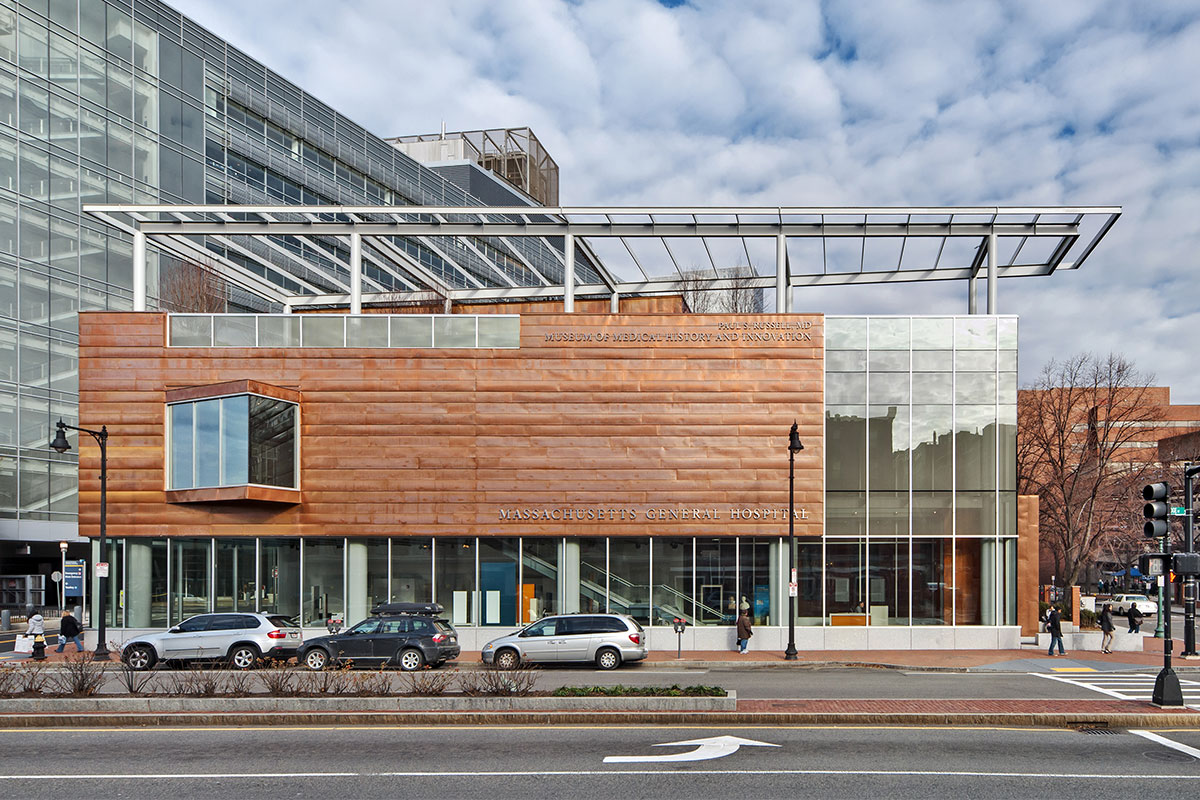About the museum
The Russell Museum is dedicated to drawing connections between innovations spanning more than 200 years, from the hospital’s charter in 1811 to the present day. Visit us for an experience that will inform, inspire and engage.

Honoring Paul S. Russell, MD
The museum at MGH is named in honor of Paul S. Russell, MD, a renowned MGH surgeon. Born in Chicago in 1925, Dr. Russell received his medical degree from the University of Chicago Medical School in 1947, and his clinical training at Massachusetts General Hospital, culminating in being named chief resident in Surgery in 1956. From 1954 to 1955, while on a leave of absence, he elected to study with Sir Peter Medawar in London, where he began investigating problems in transplantation biology, at that time an obscure field.
In 1962, after working for several years at Columbia University School of Medicine in New York City, Dr. Russell returned to MGH as chief of General Surgical Services, a title he would hold until 1968.
In 1963, Dr. Russell instituted a clinical transplantation program at MGH when the hospital performed its first kidney transplant. He has fostered a growing program of research relating to the rapidly advancing field of transplantation biology and has participated in the training of a number of clinicians and scientists from the United States and throughout the world.
In 1968, Dr. Russell founded the Boston Interhospital Organ Bank, and served as the first chairman of its Board of Trustees. Today, the bank has become the New England Organ Bank, the organization that helps coordinate the complexities of identifying, matching and distributing life-saving donor organs in the region. The New England Organ Bank has a central tissue-typing laboratory and 24-hour technicians on call for organ perfusion and tissue typing.
A full-time professor at Harvard Medical School since 1962, and, since 1998, the John Homans Distinguished Professor of Surgery at Harvard and MGH, Dr. Russell was honored with the creation of the Paul S. Russell/Warner Professor of Surgery Professorship at HMS.

About the Building
The museum was built through philanthropic gifts to MGH in celebration of the hospital’s bicentennial celebration in 2011. The Massachusetts General Physicians Organization, clinical departments including Patient Care Services, and many individual staff members provided most of the funding to create the facility. The building accommodates two floors of exhibition galleries (3,735 sf) with a roof garden on the fourth level overlooking Cambridge Street. The ground floor gallery provides space for the museum’s main exhibits, which establish central themes that help tell the story of history and innovation at MGH.
The height and massing of the building is designed to architecturally smooth the transition from the lower commercial frontage on Cambridge Street to the larger volumes of the hospital buildings behind. At street level the museum’s continuous windows allow passersby to see into the exhibits in the ground-floor gallery.
An oriel window on the second floor is a modern interpretation of the bay windows of Boston’s 19th-century buildings. The purpose of the oriel window is to animate the façade, to create a beacon visible from up and down the adjacent sidewalk. It also gives the museum visitor a privileged position from which to view the street and the city.
The walls are created from standing seam copper that will oxidize, or develop a green patina, over time. This process of patination will take approximately 20 years, although the characteristic green color can already be seen in certain places on the exterior.
The Putnam Gallery, on the third floor, is a venue for temporary exhibits that may highlight current or historic events in medicine, explore a particular topic in depth, or focus on medically related works of art.
The rooftop terrace, featuring a contemporary pergola and sculptural planting beds constructed of CorTen steel, provides views of Beacon Hill and serves as a peaceful setting for visitors, patients and their families, an area for quiet reflection outside a clinical setting. The garden, along with the entire building, also serves as a lunchtime retreat. The plantings include more than 30 species of hardy plants, shrubs and trees.
The rooftop garden is open to the public during the museum’s operating hours. Food and drink, while not allowed in the museum during operating hours, are permitted on the roof.
Principal Designers of the Museum
Architect: Leers Weinzapfel Associates, Boston
Landscape Architect: Brown Sardina Inc., Boston


